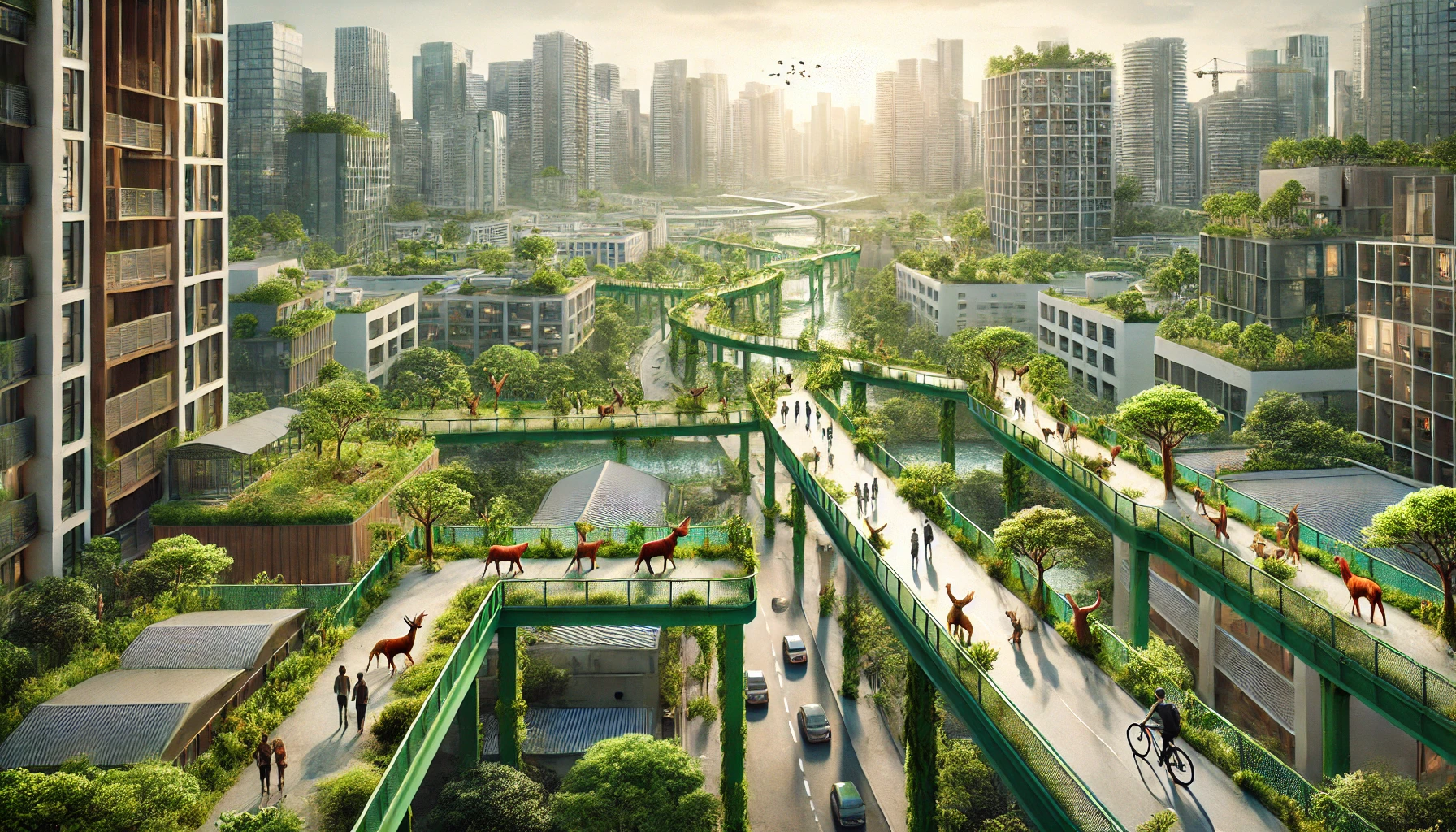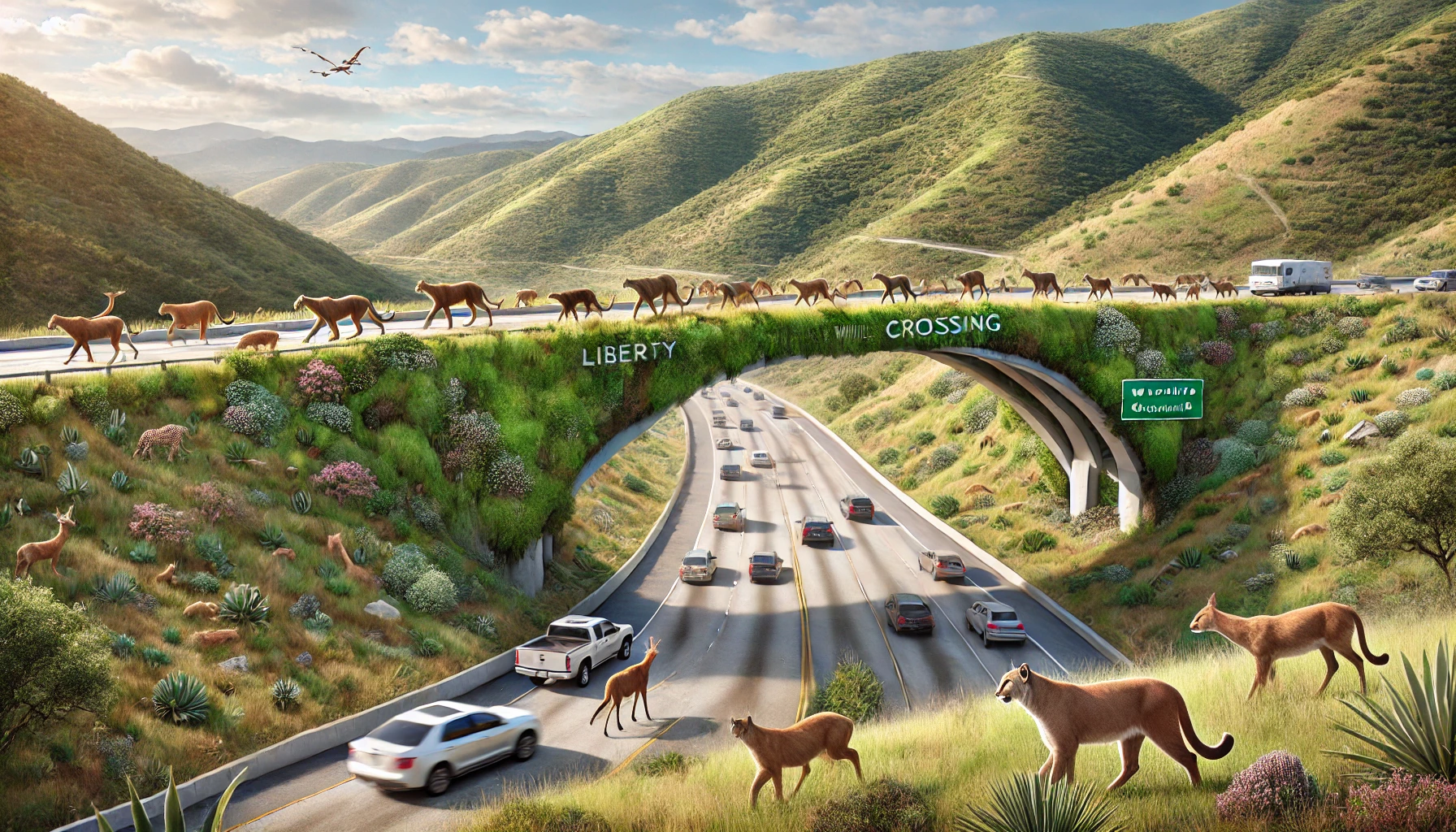
Introduction to Urban Wildlife Corridors
Urban wildlife corridors play a critical role in connecting fragmented wildlife populations in cities, fostering biodiversity, and promoting the coexistence of humans and wildlife. These corridors, whether natural or man-made, enable wildlife movement, ensuring that species have access to essential resources like food, water, and breeding grounds.
As cities expand, habitat fragmentation caused by urban development, highways, and infrastructure becomes a significant threat to wildlife connectivity. Incorporating habitat corridors into urban planning is essential for maintaining urban ecosystems and ensuring that both wildlife and humans can thrive.
The Importance of Urban Wildlife Corridors
Wildlife corridors in urban areas provide benefits that extend beyond biodiversity. They support ecosystem services, such as pollination, climate regulation, and water filtration, which directly benefit human populations. Moreover, these corridors contribute to creating sustainable cities, aligning with global efforts to combat climate change and promote environmental stewardship.
Key Benefits of Urban Wildlife Corridors:
-
Biodiversity Conservation: Helps maintain biological diversity by connecting isolated populations.
-
Reduction in Wildlife-Vehicle Collisions: Provides safe passageways to prevent accidents on roads.
-
Climate Adaptation: Enables species to migrate in response to climate change.
-
Community Well-being: Enhances urban green spaces, improving mental health and recreational opportunities for residents.
Expanded Topics for Urban Wildlife Corridors
The Science Behind Habitat Connectivity
Habitat connectivity refers to the ability of landscapes to facilitate wildlife movement. Corridors serve as linkages between fragmented habitats, reducing genetic isolation and ensuring species survival. Studies have shown that connected habitats:
-
Increase species resilience to natural disasters and environmental changes.
-
Facilitate the migration of migrating birds and other species, ensuring population stability.
Diagram: The Role of Wildlife Corridors in Habitat Connectivity
|
Fragmented Habitat Without Corridor |
Connected Habitat With Corridor |
|---|---|
|
Isolated populations; low genetic diversity |
Increased gene flow; stable populations |
Wildlife Corridors and Urban Biodiversity
Urban wildlife corridors are not just for large mammals; they also support smaller species like migratory butterflies, reptiles, and amphibians. Green corridors that include native trees and wetland habitats provide sanctuaries for diverse species, enriching urban biodiversity.
Example:
The Nature Conservancy has implemented urban biodiversity programs in cities like Singapore, integrating green corridors into urban landscapes to support species ranging from insects to birds.
Addressing Human-Wildlife Conflicts
Wildlife corridors help reduce human-wildlife conflicts by guiding animals away from populated areas and mitigating risks posed by wildlife movement in urban areas.
Mitigation Strategies:
-
Designing buffer zones between wildlife habitats and human settlements.
-
Installing wildlife crossing structures, such as overpasses or underpasses, near major highways.
Fact:
According to the National Geographic, wildlife corridors near highways in California have reduced collisions with mule deer by over 50%.
Case Studies of Wildlife Corridors in Action

Case Study 1: Los Angeles and the Liberty Canyon Wildlife Crossing
The Liberty Canyon Wildlife Crossing in Los Angeles is a groundbreaking project designed to connect habitats for mountain lions and other species isolated by urban development. The corridor spans over the busy US-101 freeway, providing safe passage for wildlife.
Highlights:
-
Area Served: Santa Monica Mountains.
-
Target Species: Mountain lions, deer, bobcats, and smaller mammals.
-
Impact: Expected to reduce genetic isolation in mountain lions and prevent vehicle collisions.
Case Study 2: Banff National Park, Canada
The wildlife corridors in Banff National Park are a global benchmark for reducing wildlife-vehicle collisions and maintaining connectivity. The park features over 40 wildlife crossing structures, including underpasses and overpasses.
Results:
-
Over 200,000 crossings recorded across multiple species.
-
80% reduction in vehicle-wildlife collisions along monitored roads.
Case Study 3: Arroyos & Foothills Conservancy, California
This initiative focuses on preserving critical wildlife passage areas (CWPAs) in urban Los Angeles. The project uses data from GPS tracking and camera traps to identify key routes and secure properties for habitat connectivity.
Case Study 4: Monarch Butterfly Migration Routes in the U.S.
Monarch butterflies rely on specific migratory pathways for survival. Wildlife corridors with native trees and milkweed plants have been established across urban and agricultural landscapes to support their migration.
Key Outcomes:
-
Enhanced population stability during migration.
-
Increased community participation in planting native species.
The Role of Stakeholders in Wildlife Corridor Projects
Government Agencies
Agencies like the National Park Service and state wildlife agencies play a pivotal role in funding and implementing wildlife corridor projects. Their efforts ensure that national policies prioritize habitat connectivity.
Private Landowners and Conservation Easements
Collaborations with private landowners through conservation easements help secure critical habitats on private lands while maintaining agricultural or recreational uses.
Non-Profit Organizations
Non-profits like the Nature Conservancy and World Wildlife Fund lead community engagement initiatives, promote wildlife conservation, and provide technical expertise for corridor planning.
Challenges and Future Directions
Challenges in Implementing Wildlife Corridors
-
Land Use Conflicts: Balancing development and conservation on limited urban land.
-
Funding Constraints: Securing long-term funding for corridor maintenance.
-
Monitoring Effectiveness: Collecting data on wildlife usage of corridors remains resource-intensive.
Innovations in Wildlife Corridor Conservation
Emerging technologies, such as genetic analysis, AI-powered monitoring systems, and drone-based habitat surveys, are enhancing the effectiveness of wildlife corridors. These tools provide valuable data on animal behavior and habitat use.
Example:
Camera traps have been used in India’s Western Ghats to monitor tiger and elephant movements, informing the placement of new corridors.
Policy Recommendations
Governments and urban planners should:
-
Enforce regulations protecting critical habitat corridors.
-
Allocate funds for constructing wildlife crossing structures.
-
Encourage public-private partnerships to expand conservation efforts.
Conclusion: The Path to Sustainable Urban Development

Incorporating wildlife corridors in urban planning is not just a conservation strategy—it is a commitment to building sustainable cities that respect the natural world. These corridors ensure that wildlife can thrive alongside growing human populations, maintaining biodiversity and ecosystem health.
By learning from successful wildlife corridor projects, leveraging innovative technologies, and fostering collaboration among stakeholders, urban areas can become models of coexistence between humans and wildlife. As cities continue to expand, prioritizing habitat connectivity will be critical for ensuring a balanced and resilient future for both nature and humanity.
